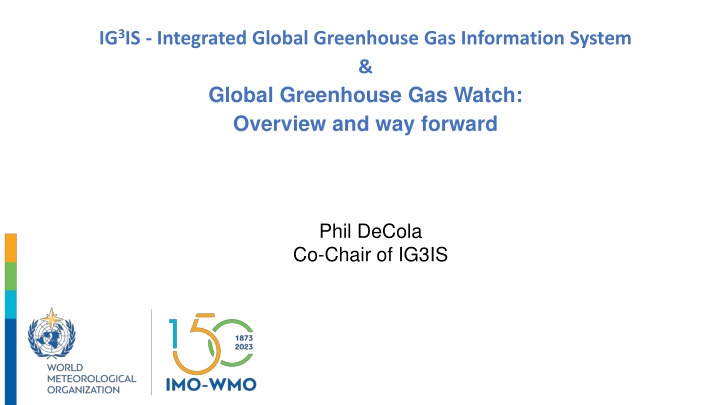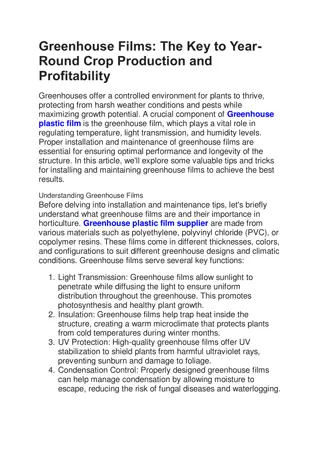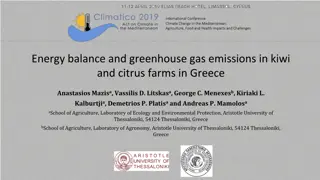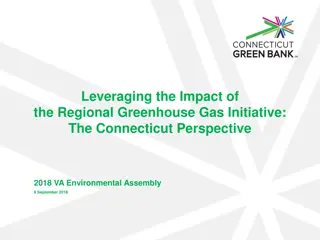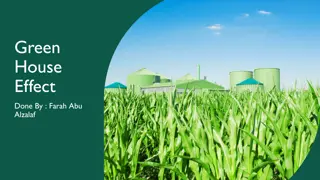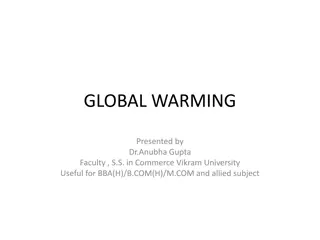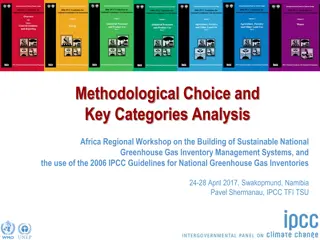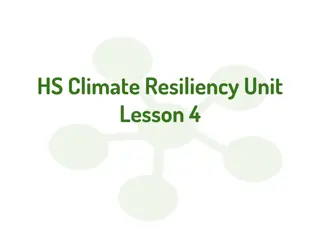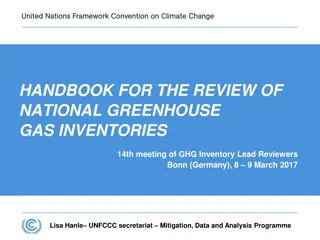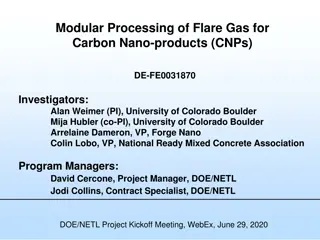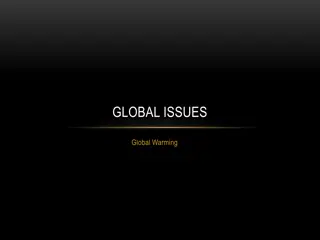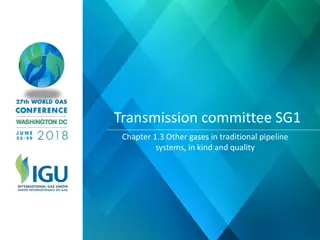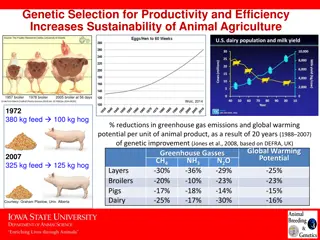Overview of IG3IS and Global Greenhouse Gas Watch
IG3IS, the Integrated Global Greenhouse Gas Information System, serves as a bridge between greenhouse gas measurement-based data and decision-making for governments and industries. It aims to quantify, attribute, and track changes in greenhouse gas emissions through a hybrid approach combining emission knowledge from atmospheric measurements and activity data. The initiative, guided by the World Meteorological Organization, focuses on promoting international standards, user co-design, and supporting emission reduction actions at various scales and sectors. IG3IS relies on a multi-tiered observing strategy and aims to mature alongside policy and technological advancements.
Download Presentation

Please find below an Image/Link to download the presentation.
The content on the website is provided AS IS for your information and personal use only. It may not be sold, licensed, or shared on other websites without obtaining consent from the author.If you encounter any issues during the download, it is possible that the publisher has removed the file from their server.
You are allowed to download the files provided on this website for personal or commercial use, subject to the condition that they are used lawfully. All files are the property of their respective owners.
The content on the website is provided AS IS for your information and personal use only. It may not be sold, licensed, or shared on other websites without obtaining consent from the author.
E N D
Presentation Transcript
IG3IS - Integrated Global Greenhouse Gas Information System & Global Greenhouse Gas Watch: Overview and way forward Phil DeCola Co-Chair of IG3IS
IG IG3 3IS IS - - Integrated Global Greenhouse Gas Information System Integrated Global Greenhouse Gas Information System (suite of systematic information services) (suite of systematic information services) World Meteorological Organization Science for Service Initiative IG3IS is the bridge connecting greenhouse gas measurement-based information with decision and policy needs of national/subnational governments and industries
IG3IS Brief History Idea for an IG3IS presented at the 3rd CAS Management Meeting in 2008 Original vision was for NWP-like Global Carbon/GHG Assimilation System Achieved buy-in with a set of measurement-based systematic information services Sustained effort began in 2015 with support from NOAA, NIST, and NASA and IG3IS resolution prepared, presented, and adopted at the 17th WMO Congress (2015) Science team was assembled and concept paper with principles and objectives and approved by Executive Council-68 in 2016 IG3IS Science Implementation Plan was completed and approved by EC-70 in 2018 and adopted by 18th Congress in June 2019
WMO IG3IS set of guiding principles Promote a hybrid approach (NAS-like) combining emission knowledge based on both atmospheric measurements and activity data to better quantify, attribute, and track changes in greenhouse gas emissions. Stakeholder driven (user co-design) so that information meets user priorities and deliver on the foreseen climate action value proposition. IG3IS, like GAW, will serve as an international mechanism to establish and propagate consistent methods and skill towards standards. Success-criteria are that the information guides and tracks additional and valuable emission-reduction actions. IG3IS relies on a multi-tiered observing strategy involving satellite, aircraft, mobile, and tower-based surface measurements IG3IS must mature in concert with evolution of policy and technology.
IG3IS Implementation: Objectives and The Work The Work: Promote and support projects across IG3IS objectives - build user-base and improve skill Document research good-practiceguidelines towards the establishment of standards Objectives across scales and sectors: Build collaborations with national inventory compilers through use of atmospheric measurements and analyses in both Annex 1 and Non-Annex 1 countries Support subnational governments cities, states, provinces with actionable information at the needed spatial, temporal and sectoral resolution to evaluate and guide progress towards emission reduction goals Detect and quantify large unknown CH4 mitigation opportunities to better inform operators across industrial sectors - waste management, agriculture and oil & gas supply chains. Timely and quantified trend assessment in support of Annex 1 and Non-annex 1 countries NDC implementation and tracking and Global Stocktake
IG3IS builds communities of practice across objectives and documents good research practice guidelines towards standards Community effort to document current state of skill & knowledge Urban Good Practice Guidelines published in 2022 National Guidelines being drafted in 2023 Regular updates to incorporate new knowledge Work with metrology and standards organization towards standards
Two IG3IS advocacy achievements IPCC Task Force on National Greenhouse Gas Inventories (TFI) 2019 Refinement to the 2006 IPCC Guidelines for National Greenhouse Gas Inventories Volume 1 - Chapter 6.10.2 Comparison with atmospheric measurements
Global Greenhouse Gas Watch: Global Greenhouse Gas Watch: WMO Role and Goals WMO Role and Goals Coordination of the global greenhouse gas measurement and modeling communities into a community of practice under GGGW, Facilitation of international cooperation programs and capacity building, Coordination of the network design of multi-tiered observing systems, Development of common standards and practices Partner with IG3IS to deliver applications and scientific information services Monthly CO2 net fluxes between the Earth surface and the atmosphere with 1x1 degree horizontal resolution delivered with a maximum delay of one month Monthly CH4 net fluxes between the Earth surface and the atmosphere with 1x1 degree horizontal resolution delivered with a maximum delay of one month 3D fields of atmospheric CO2 and CH4 abundance with hourly resolution and the latency to be defined through user requirements and further consultation (tentatively on the order of a few days). N2O abundances and net fluxes with resolution and latency still to be defined. 8
Cg Cg- -19 Resolution: call for the development of the 19 Resolution: call for the development of the implementation plan implementation plan (1) Emphasis on WMO s unique role in establishing best practices for measurement, data, and reporting standards, validation and intercomparison of information products, and other best practices needed to support global greenhouse gas monitoring infrastructure and actionable information services; (2) Emphasis on the science for services element, e.g. via use of the IG3IS framework to support stakeholder and user engagement and capacity-building to enhance the information uptake related to the greenhouse gas monitoring decision and policy needs. In particular, the plan should elaborate on how the Global Greenhouse Gas Watch and IG3IS initiatives can deliver relevant information to other UN bodies including UNFCCC, IPCC, and the United Nations Environment Programme (UNEP), including in support of the Paris Agreement Global Stocktake, as well as to other national and subnational government, academia and private sector entities, including avenues through which Members can supply best available data inputs for modelling and data assimilation capabilities used to generate the information; 9
Cg Cg- -19 Resolution: call for the development of the 19 Resolution: call for the development of the implementation plan implementation plan (3) Clear articulation of WMO s role as a coordinator of activities undertaken by Members and as a provider of technical standards and guidance, that built on its neutral position on national governments climate change policies, including their efforts to estimate and reduce GHG emissions and on its role as a provider of avenues through which Members can supply relevant data inputs to these systems to reduce uncertainties in their results over time; (4) Integration of the components of the Global Greenhouse Gas Watch within appropriate WMO-coordinated systems, the WMO Integrated Global Observing System (WIGOS), the WMO Information System (WIS), and the WMO Integrated Processing and Prediction System (WIPPS); (5) Acknowledgement that all operational components of the Global Greenhouse Gas Watch will be managed by Members; 10
Cg Cg- -19 Resolution: call for the development of the 19 Resolution: call for the development of the implementation plan implementation plan (6) Assurance that the plan will support Members in bringing the coordinated Global Greenhouse Gas Watch into a normal operational status at the end of a defined implementation phase; (7) A detailed analysis of the expected cost of implementation of the various elements of the Global Greenhouse Gas Watch, distinguishing between costs to the WMO Secretariat, costs to Members, and an estimate of expected extra-budgetary resources, including sources; (8) An implementation timetable with proposed metrics of success and Key Performance Indicators (KPIs); Urges Members to contribute to the ongoing development of the plan, through the work of INFCOM, SERCOM and the RB via the Joint Study Group and in consultation with their UNFCCC and Paris Agreement national focal point; 11
Next steps Next steps - Workshop on modelling within GGGW (by invitation), 19-22 September, Bonn: coordination of modelling activities, requirements for model products and evaluation, data management, common input data - Workshop on observations within GGGW, 3-5 October, Geneva: observing system gap analysis, integration of observations, data management and utilization, observations techniques, network design - Drafting of the Implementation Plan by the Study Group for presentation to the Infrastructure Commission session in April 2024 - Delivery of the plan to the Executive Council in June 2024 Active promotion of the initiative at diverse events, including COP28 and resource mobilization
